Space Shuttle legacy showcased on Cook Islands coin with spaceborne material inset
We often see coins themed around the numerous meteorites that impact the Earth, usually containing fragments of the actual object itself. It’s a genre that has experienced some excellent variety and quality of design over the last few years, some quite ambitious. Less common are coins that look at objects going in the opposite direction. Spaceflight is clearly one of mankind’s greatest achievements and with the advent of commercial enterprises, it’s expected to become more important in popular culture again.
A few years ago, Winco International released a 75g medal struck in base metal to celebrate 30 years of the shuttle programme. On one side it depicted a shuttle launch mid-flight, and on the other, six segments, each showing an image and inscriptions for one of the six shuttles. In the middle sat some small windows which enclosed material from each shuttle that had actually flown. It was a pretty cool design, but not a coin. In conjunction with Coin Invest Trust, Space-Coins have now made a coin version of this design, albeit in a modified form.
As it’s a coin issued for the Cook Islands, the obverse now carries the required effigy of Queen Elizabeth II, one that’s quite standard apart from the antique finish. The reverse is altogether more interesting, quite closely replicating the original medallion, albeit simplified somewhat. Instead of a pair of borders carrying extensive inscriptions around the rim, the coin has the just the orbiter name sitting at the outermost edge of each of the six segments. The images of the six shuttles, one per segment are fundamentally the same if a little cropped, but are now gilded against the antiqued background. The central segmented windows have been replaced by an undelineated, but much cleaner looking central one that holds material taken from all six shuttles. Definitely simplified, but perhaps better for it, the contrast between the antique finish and the gilding working very well.
Supplied in a themed wooden box, only 500 of them have been struck, far less than the 981 of the original medallion. Made of an ounce of fine silver it’s a cool remembrance of the great service these vehicles did in pushing the boundaries of space travel. They currently seem to be selling for just over €200.00 USD, so not a bargain choice, but this is offset somewhat by the limited mintage and the presence of the actual orbiter material. Available now from Space-Coins.com, or from site sponsors First Coin Company who have the usual free shipping and import tax guarantee.
2016 SPACE SHUTTLES SILVER COIN
THE SPACE SHUTTLE
The Space Shuttle was a partially reusable low Earth orbital spacecraft system operated by the U.S. National Aeronautics and Space Administration (NASA), as part of the Space Shuttle program. Its official program name was Space Transportation System (STS), taken from a 1969 plan for a system of reusable spacecraft of which it was the only item funded for development. The first of four orbital test flights occurred in 1981, leading to operational flights beginning in 1982. Five complete Shuttle systems were built and used on a total of 135 missions from 1981 to 2011, launched from the Kennedy Space Center (KSC) in Florida. Operational missions launched numerous satellites, interplanetary probes, and the Hubble Space Telescope (HST); conducted science experiments in orbit; and participated in construction and servicing of the International Space Station. The Shuttle fleet’s total mission time was 1322 days, 19 hours, 21 minutes and 23 seconds.
Shuttle components included the Orbiter Vehicle (OV), a pair of recoverable solid rocket boosters (SRBs), and the expendable external tank (ET) containing liquid hydrogen and liquid oxygen. The Shuttle was launched vertically, like a conventional rocket, with the two SRBs operating in parallel with the OV’s three main engines, which were fueled from the ET. The SRBs were jettisoned before the vehicle reached orbit, and the ET was jettisoned just before orbit insertion, which used the orbiter’s two Orbital Maneuvering System (OMS) engines. At the conclusion of the mission, the orbiter fired its OMS to de-orbit and re-enter the atmosphere. The orbiter then glided as a spaceplane to a runway landing, usually at the Shuttle Landing Facility of KSC or Rogers Dry Lake in Edwards Air Force Base, California. After landing at Edwards, the orbiter was flown back to the KSC on the Shuttle Carrier Aircraft, a specially modified Boeing 747.
The orbiter resembled a conventional aircraft, with double-delta wings swept 81° at the inner leading edge and 45° at the outer leading edge. Its vertical stabilizer’s leading edge was swept back at a 50° angle. The four elevons, mounted at the trailing edge of the wings, and the rudder/speed brake, attached at the trailing edge of the stabilizer, with the body flap, controlled the orbiter during descent and landing.
The orbiter’s 60-foot (18 m)-long payload bay, comprising most of the fuselage, could accommodate cylindrical payloads up to 15 feet (4.6 m) in diameter. Information declassified in 2011 showed that these measurements were chosen specifically to accommodate the KH-9 HEXAGON spy satellite operated by the National Reconnaissance Office. (Source: Wikipedia)
THE SPACE SHUTTLE IN PICTURES
THE SIX SHUTTLES
ENTERPRISE: Designated OV-101, Enterprise was the prototype shuttle and rolled out for the first time on 17 September 1976. Built without engines or a working heat shield for use as a test-bed, she was originally meant to be retrofitted for spaceflight, but design changes and other cheaper options meant it wasn’t to be. She was restored and placed on display at the Smithsonian in Virginia until 2012 when she was moved to the Intrepid Sea, Air & Space Museum in New York.
COLUMBIA: The second to be built but the first space-rated orbiter, Columbia, designated OV-102, launched for the first time on mission STS-1 on April 12, 1981. In the next 22 years, she completed 27 missions but disintegrated during re-entry on mission STS-107 on 01 February 2003, killing all seven members of the crew.
CHALLENGER: The second space-rated orbiter, Challenger (OV-099) had its maiden flight on 04 April 1983. She made nine flights successfully before breaking up 73 seconds after launch on the tenth, STS-51L on 28 January 1986. The crew of seven was killed and the shuttle fleet grounded for two and a half years as a result.
DISCOVERY: After her first flight on 30 August 1984, OV-103 went on to complete 39 missions in the next 27 years. She was the first shuttle to retire, having undertaken more spaceflights than any other vehicle, including lifting the Hubble telescope and International Space Station parts into orbit. Her last mission was STS-133 on 24 February 2011. Discovery now lives in the Smithsonian Institution’s National Air and Space Museum.
ATLANTIS: Given the designation OV-104, Atlantis first flew on mission STS-51-J between the 3rd and 7th of October, 1985. She undertook the final ever shuttle mission (STS-135), her 33rd, on 08 July 2011. Over a successful career, Atlantis had orbited the Earth 4,848 times, covering a staggering 126 million miles. She is displayed at the Kennedy Space Center Visitor Complex.
ENDEAVOUR: The fifth and final space-worthy shuttle to be built (OV-105), Endeavour was constructed partly from spares to replace the tragically lost Challenger. She undertook 25 missions between May 1992 (STS-49) and May 2011 (STS-134). She was named after the British ship Endeavour (hence the British spelling), the vessel which took Captain Cook on his first voyage of exploration. There was even a piece of wood from Cooks ship in the cockpit. She currently resides at the California Science Center awaiting a new display.
SPECIFICATION
| NAME | 2016 SPACE SHUTTLE |
| DENOMINATION | $5 Cook Islands |
| COMPOSITION | 0.999 silver |
| WEIGHT | 31.1 grams |
| DIAMETER | 38.61 mm |
| FINISH | Antique |
| MODIFICATIONS | Gilding, inset capsule full of orbiter material |
| MINTAGE | 500 |
| BOX / COA | No/ Yes |


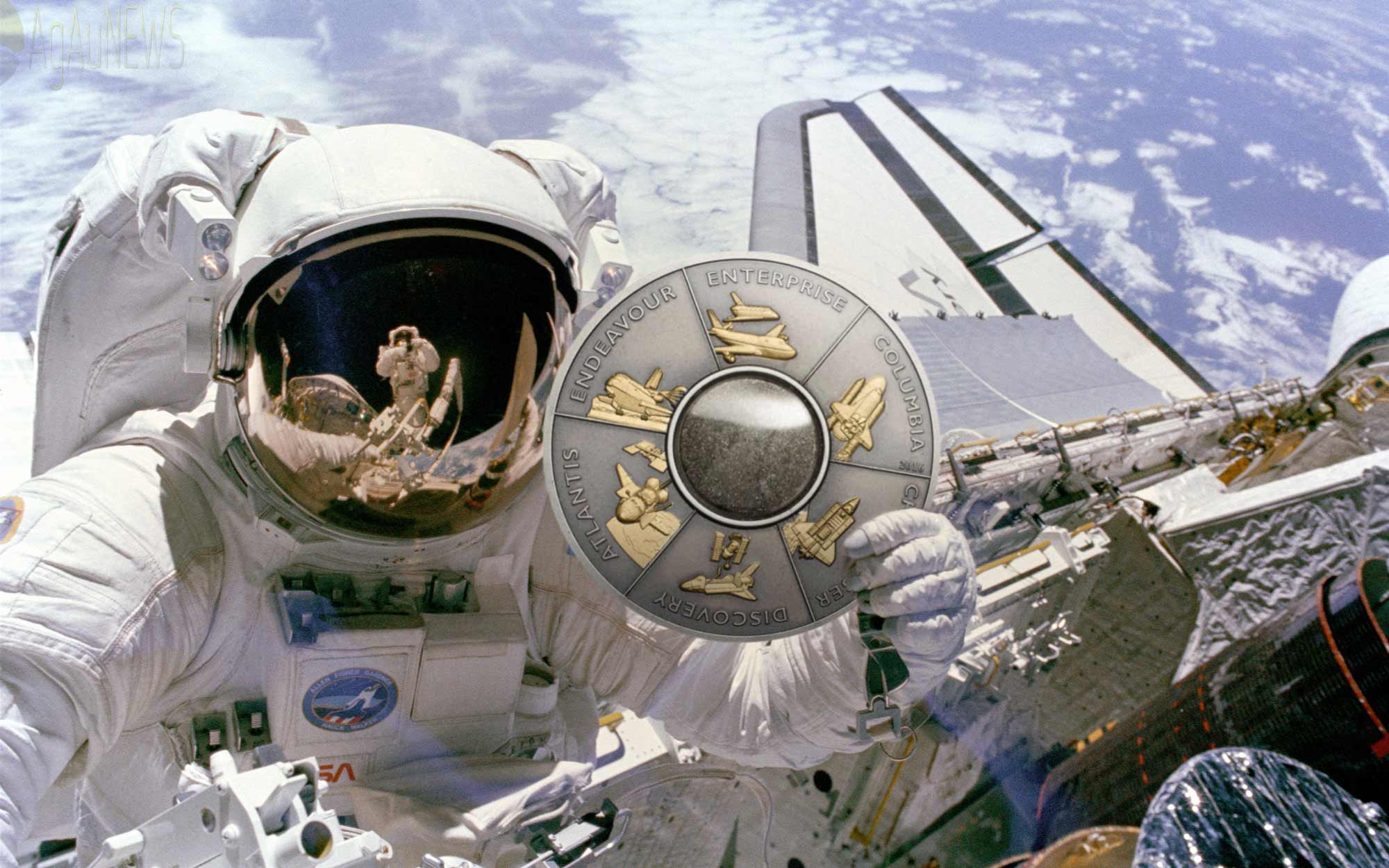
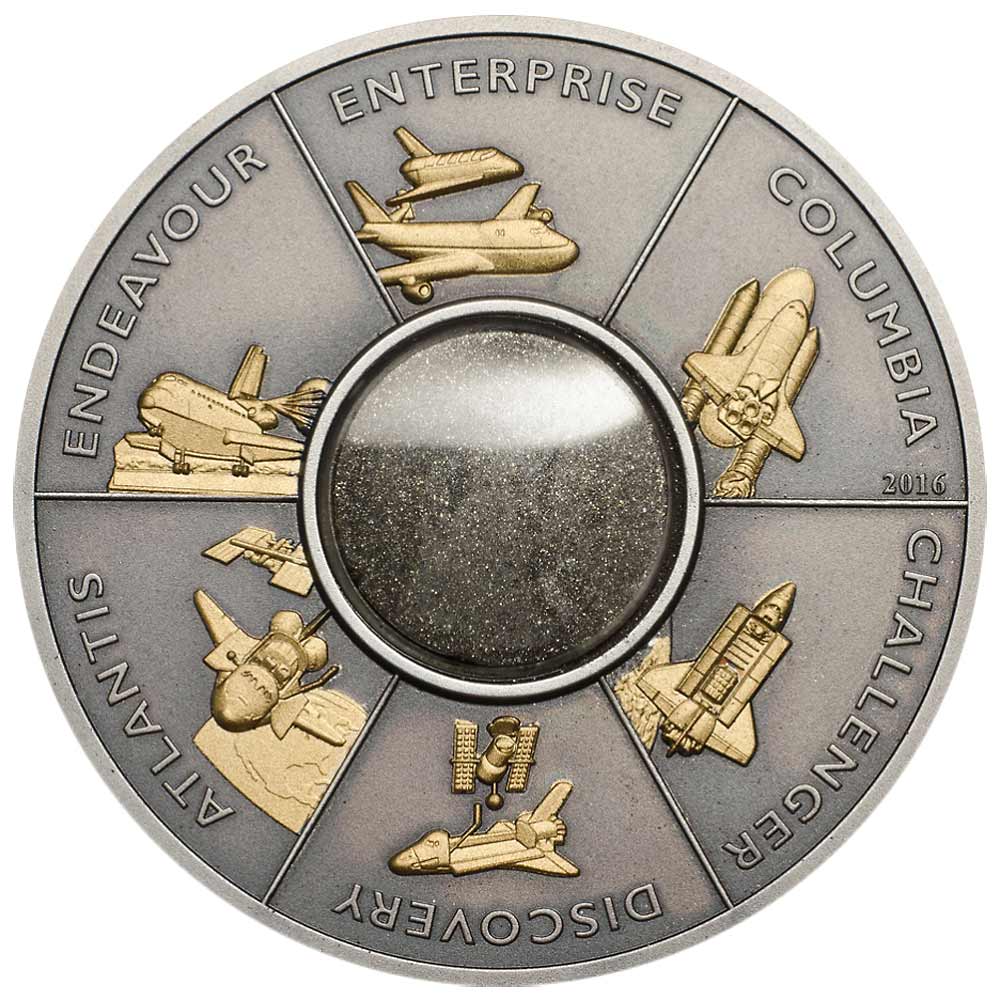
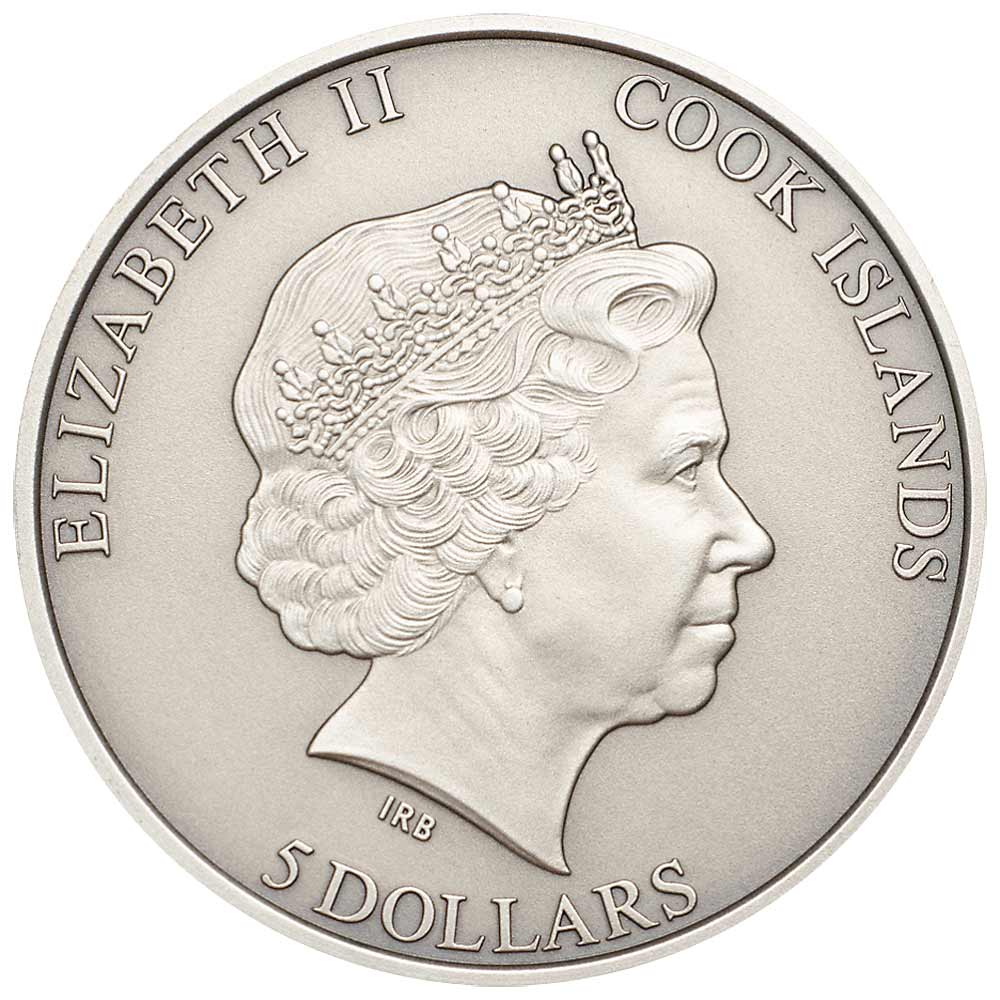

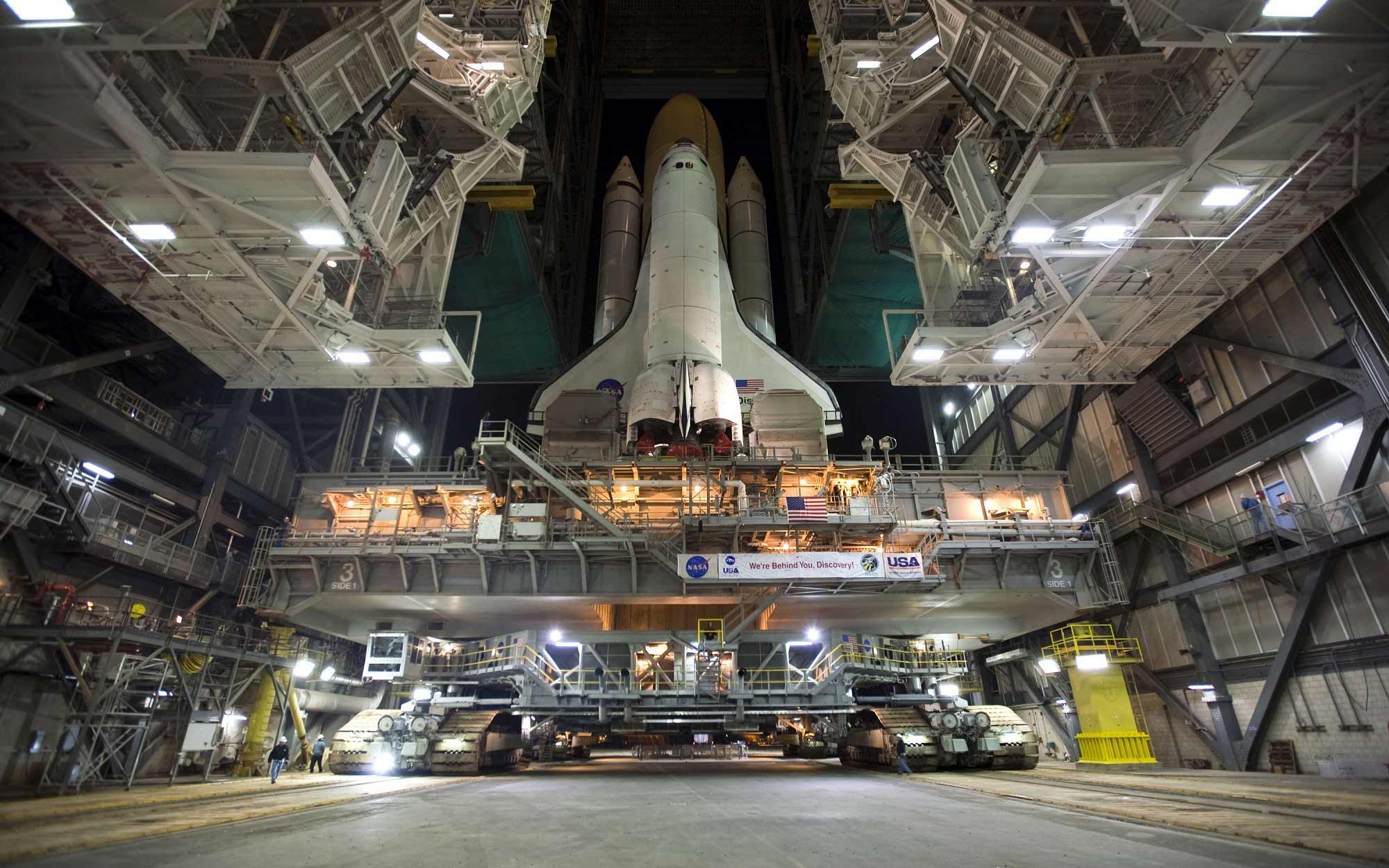
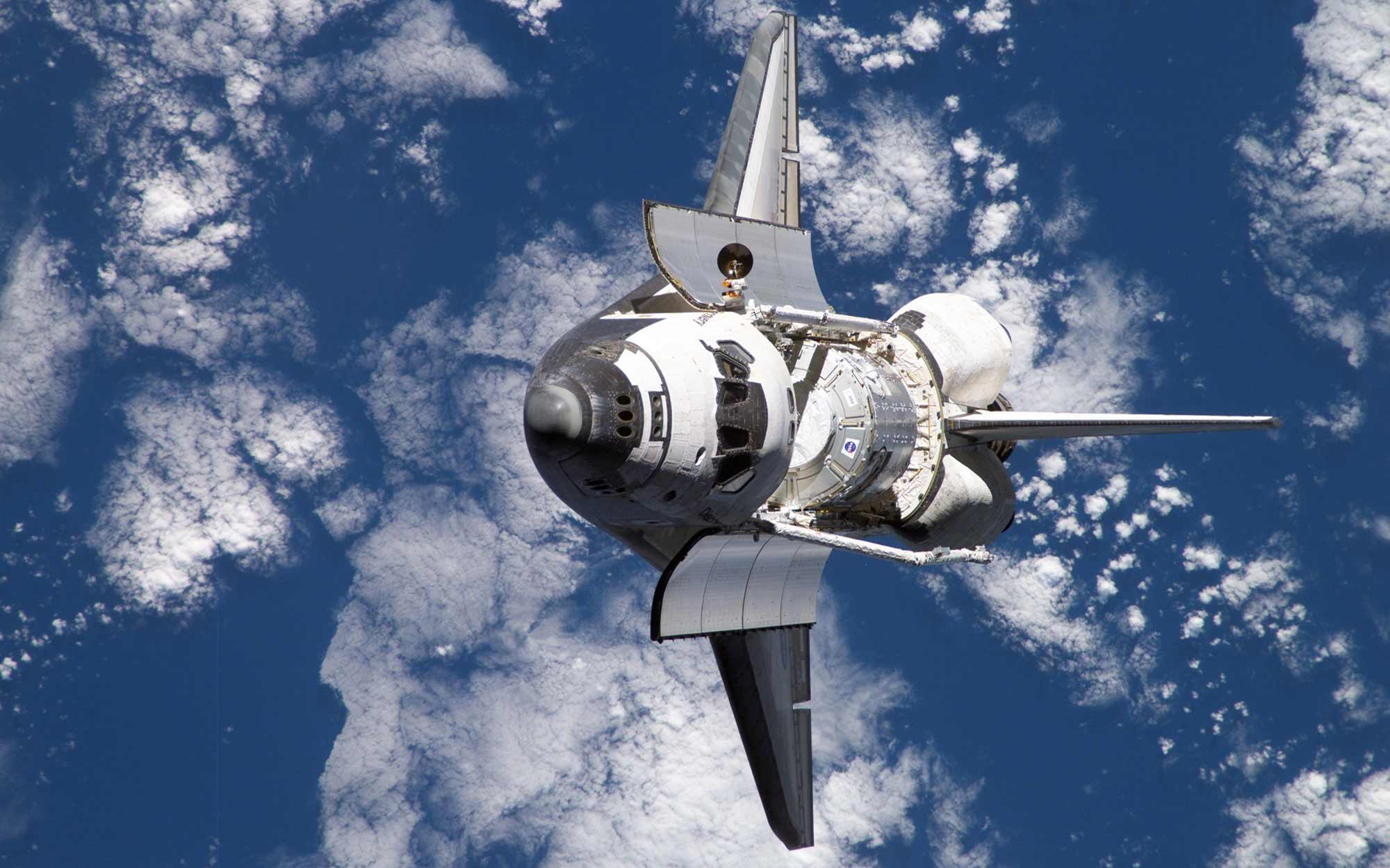



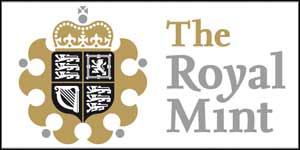



Leave A Comment